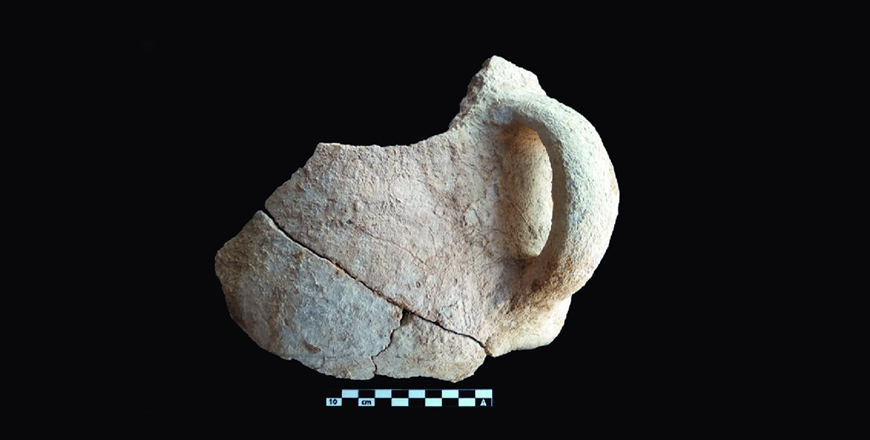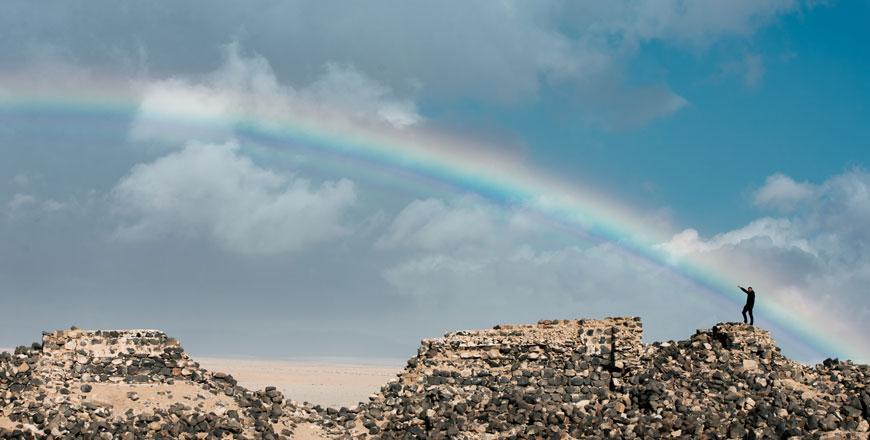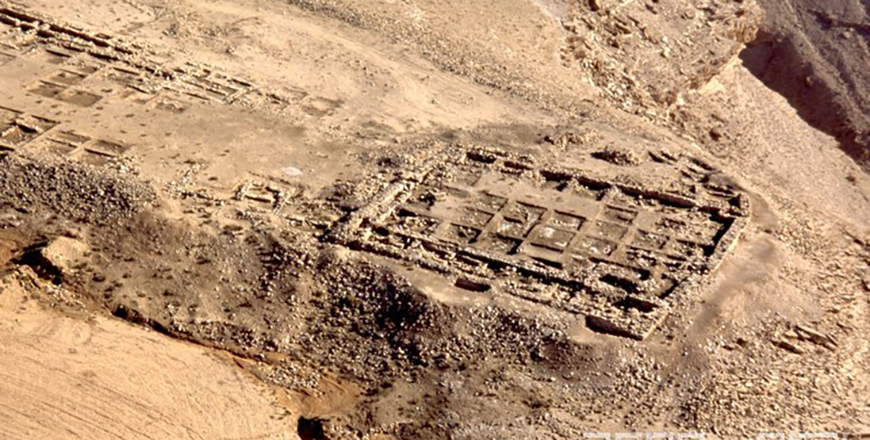You are here
Unearthing 124 pottery fragments from Faysaliyya
By Saeb Rawashdeh - Aug 05,2024 - Last updated at Aug 05,2024

A pottery found at Munqata'a (Photo courtesy of P. Kołodziejczyk)
AMMAN — Faysaliyya is an archaeological site in Tafileh Governorate where a team of Polish archaeologists from Jagiellonian University in Krakow discovered 124 pottery fragments, although their dating was not possible back in 2018. A total of 124 pottery fragments were found in the Faysalyyeh site. Pottery fragments were found in the rubble associated with the stone structure and the stone backfill and most of the fragments are dark brown and red brown in colour while the clay was tempered with a mineral admixture.
"In this aspect, pottery resembles the fragments discovered during the first season of work. As most of the fragments are elements of the body, it is difficult to clearly define the form of the vessels," said director of the project Piotr Kołodziejczyk adding that the only diagnostic discovery is an almost complete vessel.
It is a bowl with a flat bottom and straight walls and the vessel has a characteristic plastic decoration in the form of a rope located below the rim, above which several small oval shallow holes are visible.
"The bowl was handmade and the decorative motif and its placement in the upper part of the vessel may suggest connections with the Early Bronze [EB] or Middle Bronze [MB] Age cooking pots discovered in sites such as Murayghat (near Madaba) Abu Snesleh or Shehem.
Moreover, it is therefore necessary to consider whether the finding should not be dated back to a later time than previously thought, i.e., EB IV–MB. This does not contradict the findings from the first season of research, during which the only diagnostic element was a small fragment of the spout of hole mouth jar.
EB date is also suggested by the C14 date received from the sample located nearby the vessel, said Kołodziejczyk, because it is not clear whether the vessel can be used for dating the whole complex, but at least two other bottoms fragments discovered this season belong to the same type of bowls.
"Fragments of pottery vessels were found in Munqata'a [another site in the vicinity of Faysaliyya] all the excavations examined in 2018, but only in the trench the artefacts were located in situ. In the other two sondages, they were found in a secondary deposit," Kołodziejczyk said, adding that pottery fragments were deposited in layers of probable destroyed wall.
In the Western trench, ceramics rested on the floor adjacent to the inner wall of a large building." What is characteristic for this type of situation, large fragments of vessels rested flat on layers of compacted earth floor. In the central part of the trench, however, there were found vessels standing directly by the wall," noted Kołodziejczyk, adding that most probably they were used to store flint semi finished products, as in the interior of one of the jugs a starting core was found, while another artefact similar in character was located right next to it, covered with a large number of fragments of a vessel destroyed as a result of the collapse of the building's structure.
As in the previous season, objects from two chronological horizons were found.
"Vessels connected with the Pottery Neolithic’s Jericho IX culture dominated, whereas in the layers of the landfill and in the top soil single fragments of vessels from the Roman period were found. Findings from the classical period cannot be linked to any of the structures recognised in recent research on the site," the scholar said, adding that most likely, its appearance is rather accidental and is associated with erosive and post-depositional processes affecting the area around the site.
Regarding the forms of the vessels most of them have an open form and there are various types of them.
"A certain novelty in relation to the previous season was the discovery of large storage vessels. They can be assigned to two groups of necked pithoi, and hole- mouth pitoi – group. Both types have wide, simple rims," said Kołodziejczyk.
Related Articles
AMMAN — A Polish archaeological team from the Jagiellonian University of Krakow studied sites in southern Jordan, one of them is Faysaliyya
AMMAN — A team of Polish archaeologists recently unveiled the largest discovered Neolithic settlement in the mountain valley of Munqataa in
AMMAN — Khirbet Al Lehun is located in the central Jordanian massive, north of Wadi Mujib.














